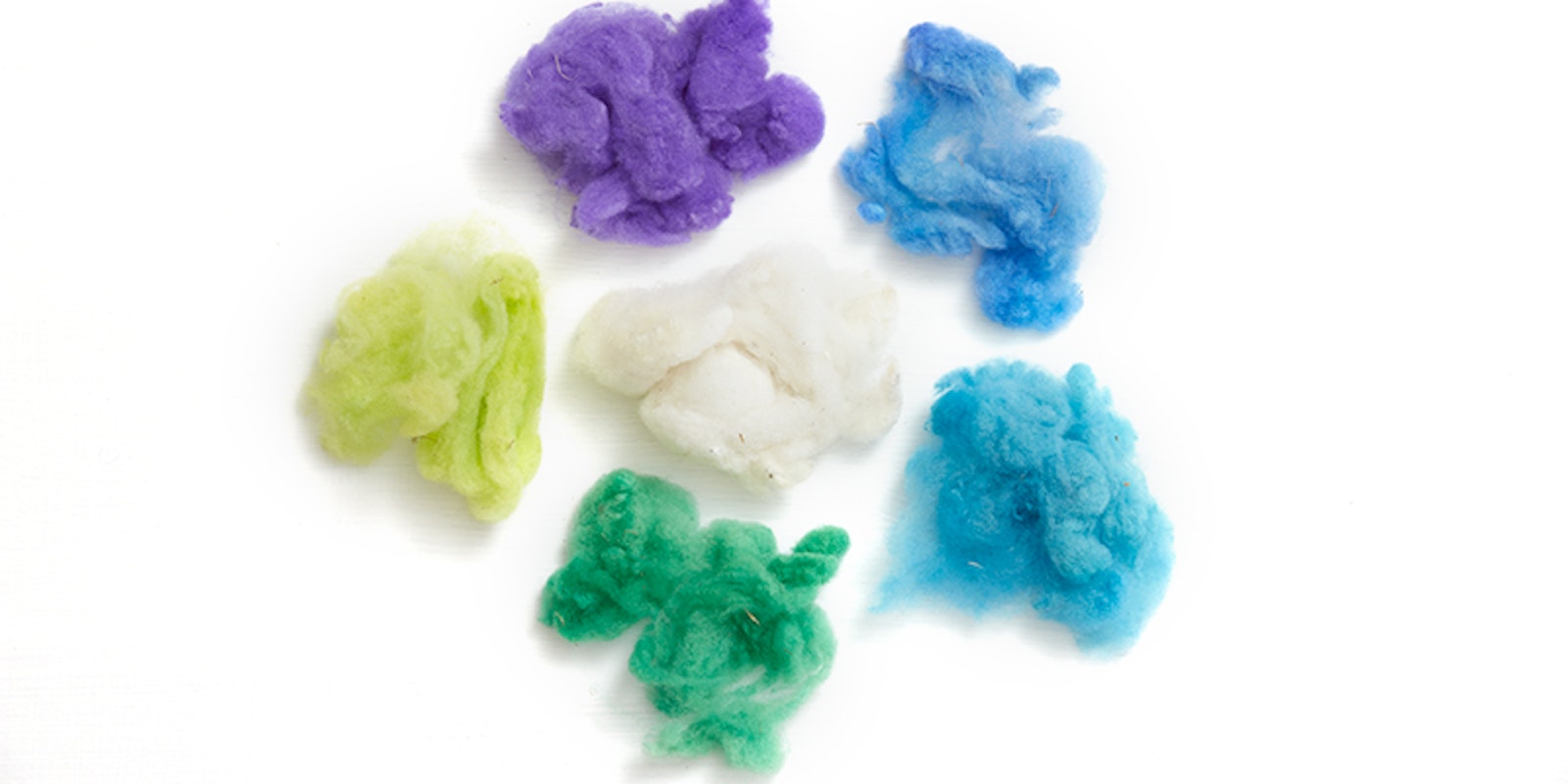Ever wanted to experiment with fiber and spin gradient yarn? In “How Many Ways Can You Make a Gradient Yarn?” fromSpin Off Spring 2017, Cindy Craft explores four possibilities: dyeing several colors, dyeing and carding, carding alone, and dyeing alone. Here are two methods for using handcards, a drumcarder, and her dye pots to create rainbows in gorgeous shifting hues.
In the past, I have created gradient yarns by dyeing my handspun, but following a dye workshop and an online discussion about blending on a drumcarder, I decided to explore a different path. Using blending and dyeing techniques, I wondered, how many ways could I spin a gradient yarn for a matching pair of socks?
Natural Fleece to Five Batts
Top to Bottom: 100% purple (dyed); 50% purple, 50% teal (carded); 100% teal (dyed); 50% teal, 50% yellow (carded); and 100% yellow (dyed)
I began with a Corriedale fleece, then chose a gradient from purple to neon yellow with teal in the middle. I chose to spin singles for the socks and crank them on a circular sock machine.
Weigh a pair of handmade socks that you’d like to emulate. Divide the wool needed for a pair of socks (plus a little for a fudge factor) into five equal piles by weight, then dye each of the piles. You can use two colors or a whole rainbow between the beginning and ending colors.
Card each of the piles separately, creating five batts of graduating color.
Divide each of the five batts in two, one for each sock. Weigh each of the ten piles of fiber; they should all be equal, and the total should be the same as your already-knitted handspun socks. If it’s not, remove some fiber. (Because of the fudge factor, you should have plenty of wool in total.) To spin a plied yarn, divide each sock’s share of batts into as many piles as you plan plies.
You can spin each color in the gradient, creating the yarn for one sock; or you can draft each color and card them all onto the drumcarder, creating a single large rolag that you can spin from one end to the other. (I got the idea from a Ravelry forum to card each of the stripes onto the drum side by side, then roll a multicolored batt off the drum wrapped around a pair of dowels to make an oversized rolag, but I found it more difficult to spin than each of the original batts individually.) I left the yarn as singles and cranked a pair of toe-up socks on a circular sock machine.
Dyed Fleece to Nine Batts
 Top to bottom: 100% purple (dyed); 50% purple (dyed);
Top to bottom: 100% purple (dyed); 50% purple (dyed);
25% purple, 25% teal (carded); 50% purple, 50% teal (carded); 50% teal (dyed), 25% purple, 25% teal (carded); 100% teal; 50% teal (dyed), 25% teal, 25% yellow (carded); 50% teal, 50% yellow (carded); 50% yellow (dyed), 25% teal, 25% yellow
(carded); and 100% yellow (dyed).
I was unhappy with the abruptness of the color changes in my first socks, so I decided to try to create a yarn with more gradual transitions. Method 2 uses a range of fiber-preparation tools. Start from the same wool dyed in the same colors as Method 1, then use handcards to create four additional colors in between the five original colors. This creates nine colors in the gradient, which means recalculating how much of each color fiber you need.
With nine colors for each sock, divide the total weight of your target pair of socks by eighteen to determine how much of each color you need. The four colors that were blended on the handcards were each made of 50% (or 1⁄36th of the total weight of socks) of the color above in the gradient and 50% of the color below in the gradient. The resulting socks have a more gradual shift in color and are more appealing, in my opinion.
As you look at the four colors that were blended on the handcards compared to the five colors that were dyed, it’s hard to tell which technique produced which effect.
Final Thoughts
I drew several conclusions from the four methods. The first is pretty obvious if you think about it: The more steps in the gradient, the smoother the color transition will be. A nine-step gradient is smoother than a five-step gradient. The second is that transitioning from a light color to a dark color requires more shades than transitioning from one dark color to another to achieve a smooth gradient. The third is that blending colors with fiber preparation tools or by dyeing is equally effective for creating a particular color. This was a surprise to me; I had expected that the blended fiber would appear more heathered and that I’d be able to see the two colors that I’d blended.
Cindy
CINDY CRAFT is a spinner, knitter, knitting-pattern designer, felter, cranker, dyer, and soapmaker, among other things. Cindy and her daughters make up Subito Farm. Find their handmade items at www.subitofarm.com and at fiber shows throughout the Northeast.


